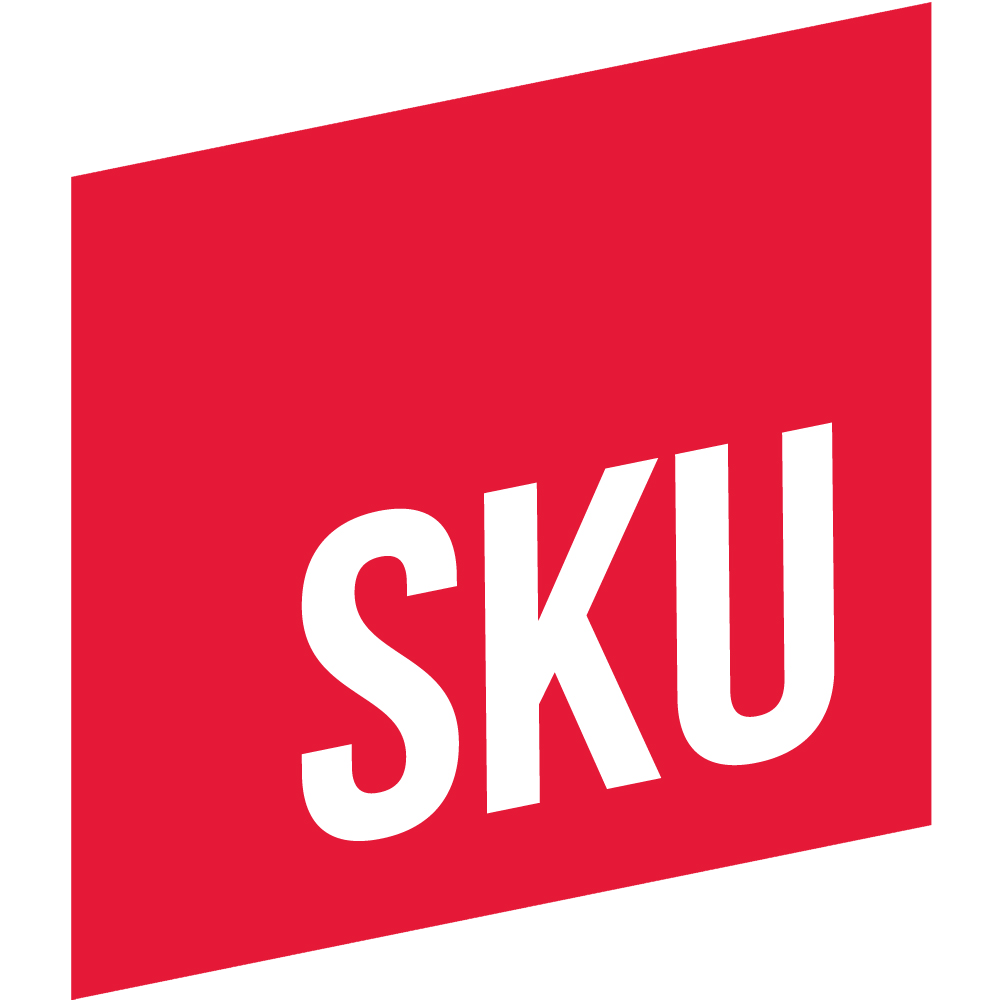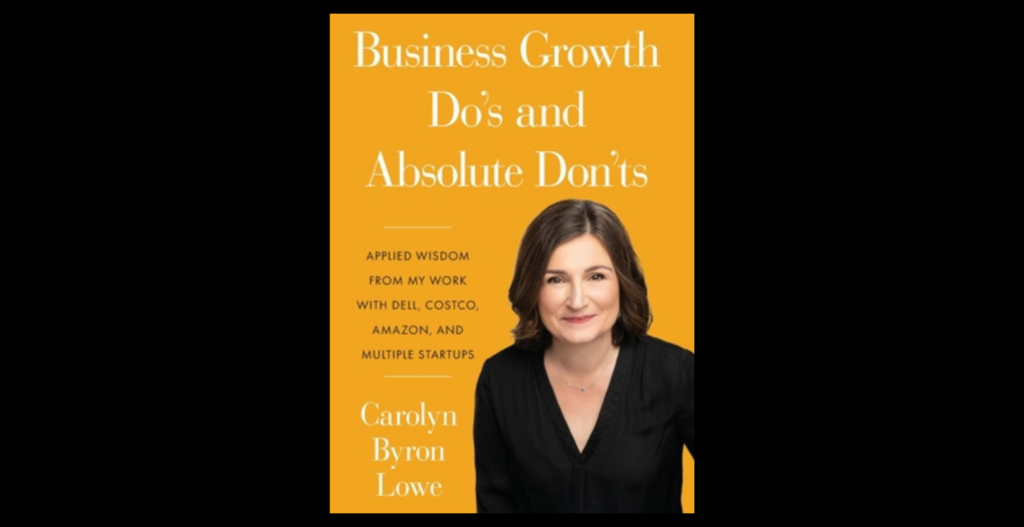From her seven years as an executive at Dell Inc. to her repeated success as a serial entrepreneur, SKU mentor and ROI Swift founder and CEO Carolyn Lowe knows what it takes to grow and scale a company.
Lowe published a new book in August: “Business Growth Do’s and Absolute Don’ts: Applied Wisdom from My Work with Dell, Costco, Amazon, and Multiple Start-ups.” It quickly climbed to the top spot spot for web marketing books.
In the book, the digital-marketing expert shares tips for startup founders and later-stage company executives alike to assist them with charting the best path forward for their ventures. The SKU Report caught up with Lowe to ask what advice she has specifically for CPG startups.
SKU: In your book, you begin with advice on core values and mission. Why are those two elements the most critical for startups?
Carolyn Lowe: In any business, the success of your team, and ultimately, your company comes down to people. If you get the right people on the bus and your mission is clear, you can accomplish many things. I’ve seen amazing things happen in divisions where a leader changes and that person embodies the core values. That same team of people can do great things. Negativity and toxic people can ruin your culture and your company.
Hire People Smarter Than You Are
SKU: How do identifying those arguably intangible company characteristics translate into concretely helping a business grow and scale?
Carolyn Lowe: When I was at Dell Inc., a great leader once said to me, “Hire people smarter than you.” This advice is fantastic. When you hire people smarter than you, you clear roadblocks and let them run. When you don’t hire people smarter than you, you end up doing a lot of training and encouraging them to think about innovation. Smarter people do this on their own. Yet, a lot of managers and leaders are afraid to hire smarter people. I welcome the chance. It makes my job easier! How this translates to growth and scale is product-line extensions, new ways of doing things, efficiency and a can-do attitude.
SKU: What are the most important “Don’ts” you advise businesses to avoid?
Carolyn Lowe: Don’t spend money on a brand until it’s five stars. A brand I worked with told me that the company OXO — which makes kitchen tools, etcetera — will pull a product from the shelves if it’s only four stars, instead of five. Most brands don’t have that kind of vigilance. You don’t get a lot of chances to make things right with a customer if you get it wrong the first time. First impressions and experiences matter. I’ll give you two examples. The first is a custom men’s clothing company that I did a consulting project for. I did a massive qualitative — 30 phone calls — and quantitative — examined their entire customer database — [analysis] to find out why some people only purchased once. Turns out, they had a product-quality issue early on, and many customers didn’t come back a second time after a poor experience the first time.
The second example is largely for eCommerce companies. At ROI Swift, we have brands come to us all the time with great ideas and lousy websites. Through our partnership with Google, they told me that 40 percent of your traffic will leave if your page doesn’t load in four seconds or less. Or, they have horrible page designs that don’t convert. The biggest “don’t” for eCommerce is: Don’t spend money on advertising or other marketing until you have a fast, high-converting website.
Start Organically
SKU: What customer-acquisition methods have you found yield the best results while costing startups the least?
Carolyn Lowe: At the risk of putting myself out of a job — ROI Swift does paid social, search and Amazon advertising — the best way to start is organically. Take, for example, a new baby-clothing brand. Spend time finding bloggers, TikTok users, Instagram micro-influencers — [who have] 2,000 to 8,000 followers — and start engaging with them. It costs nothing but time to start following and engaging. The hashtag, #babyclothing, has over 5 million posts. Find those passionate about your brand, and make them your advocates. For food and beverage, while not cheap, we’ve seen the best brands be successful through sampling and owning local markets. Making a presence locally helps brands quite a bit. And, sending product to celebrities passionate about your brand and mission has done wonders.
SKU: Does a timeline exist when a CPG company should aim to become profitable, or does it depend on the sector?
Carolyn Lowe: It really depends on the sector, how much financing they have and what their goals are. There are plenty of unprofitable businesses with massive valuations. For a CPG company, if I were starting one, I would aim for 12 months to profitability.
SKU: What paid social-advertising channels should all CPG founders be focusing on today?
Carolyn Lowe: Again, this depends on the type of business. Five-dollars bags of gluten-free pretzels are hard to make work on eCommerce and paid advertising. Our sweet spot is businesses [with] over $50 average order values. But, if you have a sampling budget, we’ve been successful with getting samples to get email addreses, then following up with them for there. If a brand wants to be profitable on the first sale rather than break even or lose money, knowing there is high repeat, they will find that difficult on social advertising. We will see the best results with Facebook, Instagram, TikTok, Pinterest and SnapChat.
Scratch Low-Impact, Low-Effort Things
SKU: Marketing today encompasses so many different types. Does an order exist of the kinds of marketing activities a startup should deploy first?
Carolyn Lowe: This question becomes difficult when dealing with a startup. You have limited resources and limited time — which is your most valuable commodity. Get 90-day priorities in order every 90 days, and map those activities to what will move the needle. We always look for the high-impact, low-effort things, and go do those first. Don’t ever do the low-effort, low-impact things. Scratch those right off.
SKU: What are the basics of a successful pricing strategy?
Carolyn Lowe: Pricing comes down to a few things. Perceived value and uniqueness. We recently had a conversation with one of our apparel brands. They only wanted to spend 10% of revenue on marketing, rather than 15%. However, when they cut back spend, their sales took a nose drive. Their average order was $70. At that price point, raise it by $5, and no one blinks. It comes down to quality and scarceness as well. Brands like the limited-edition, $2,000 shoes do very well due to their scarcity. In terms of pricing strategy, a rule of thumb for most brands is: 20 percent cost of goods, 10 percent operating expenses and 50% marketing, then they make 20% [earnings before interest, taxes, depreciation, and amortization]. That’s a simple formula, but every brand should know their numbers on [cost of goods sold], [operating expenses] and what their EBITDA target is.


